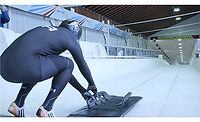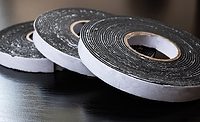The Greener Side of Adhesive Coating
A 100% solids adhesive coating process is operationally and environmentally sustainable for pressure-sensitive adhesive construction.
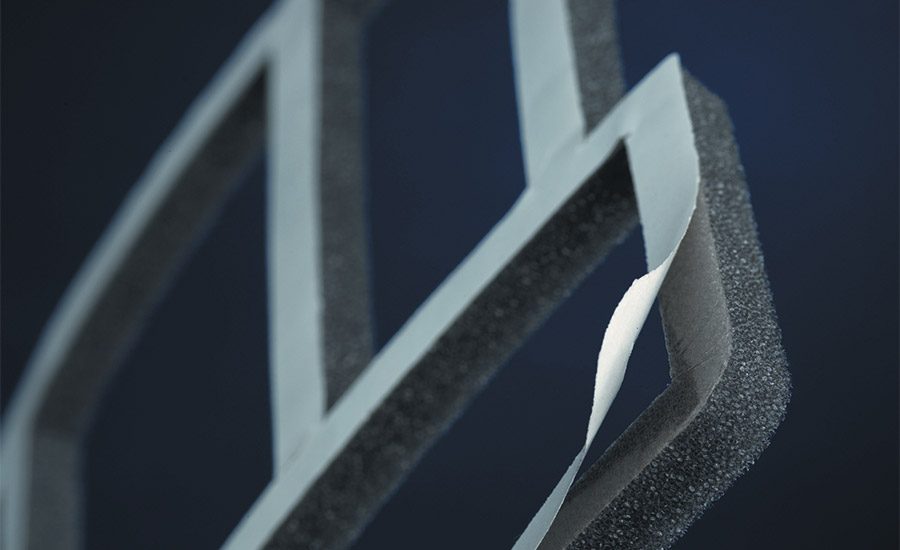
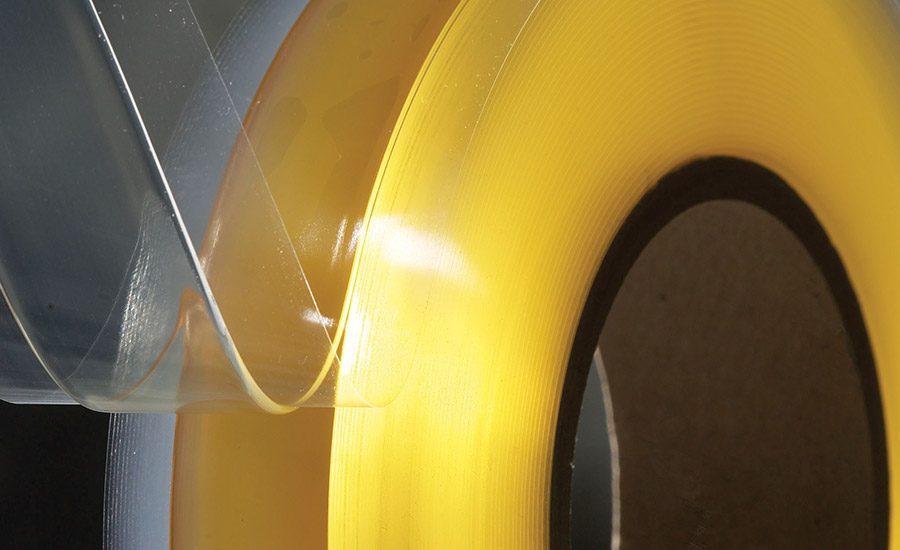
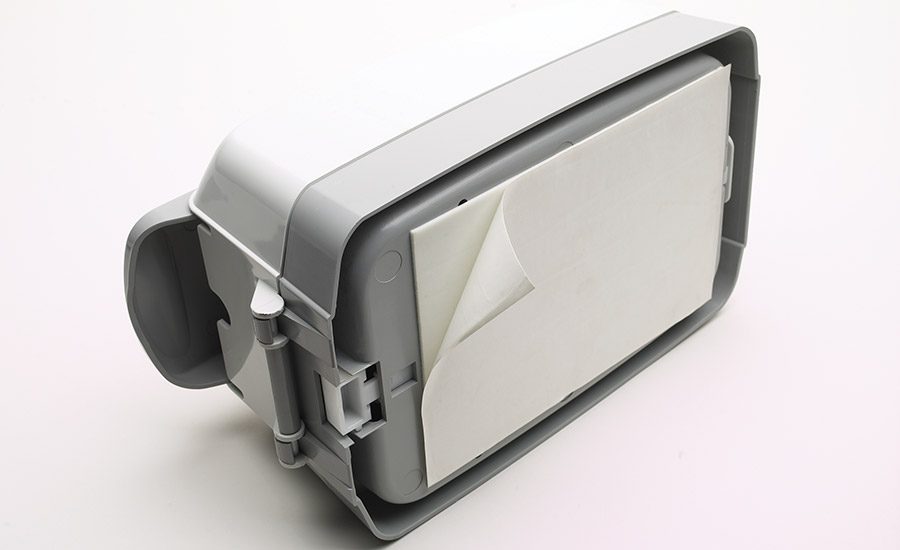
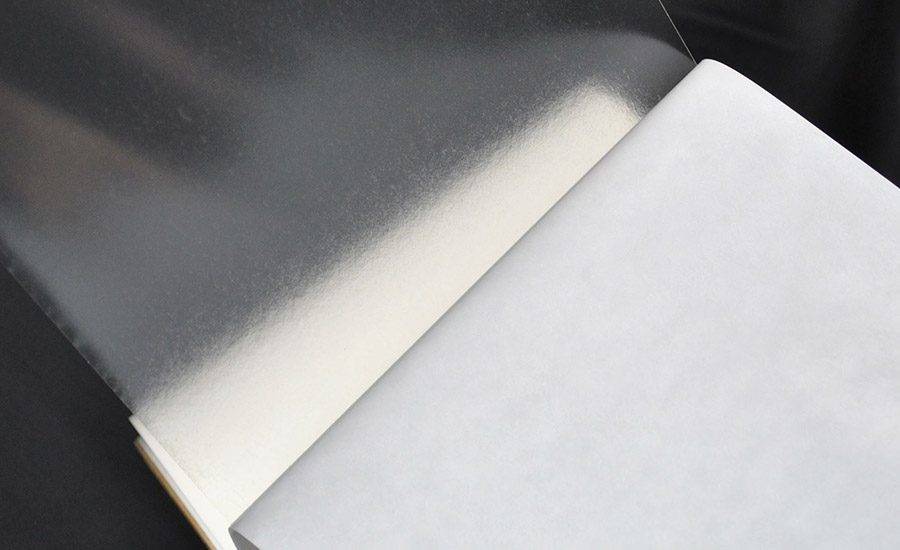
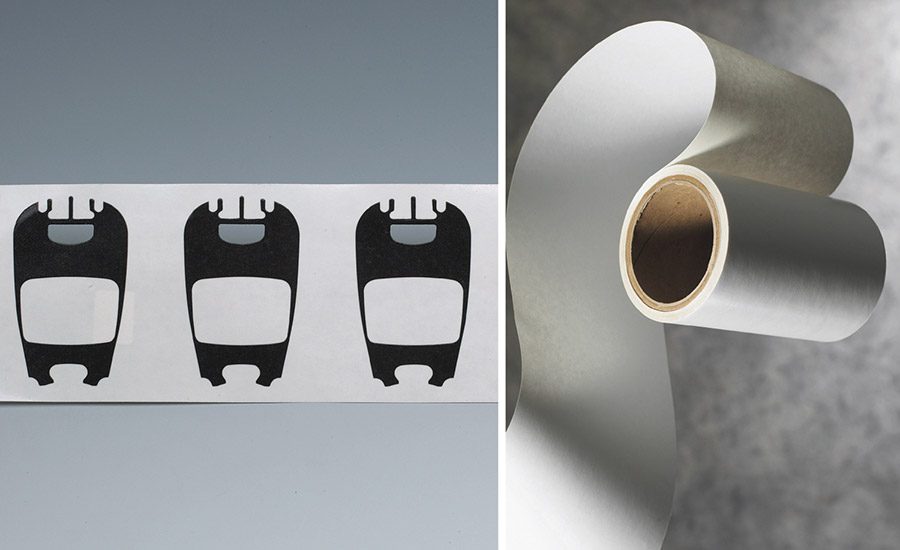





Adhesive coating is an important and necessary step in pressure-sensitive adhesive (PSA) construction. It’s also one of the least-discussed aspects of the PSA manufacturing process and, as of late, is becoming one of the most environmentally sustainable.
In basic terms, when making a PSA, an adhesive and a substrate are combined to form a final product; adhesive coating is required to uniformly place the adhesive onto the substrate. The adhesive is a liquid or liquid form that is formulated for varying degrees of tack, strength, toughness, flexibility and opacity. A typical carrier substrate could be paper, foil, plastic or fabric.
For years, adhesives were coated via a process that required the use of solvents. Still used today, solvent-based coating historically produced superior adhesive products, while offering the ability to include a range of applications, coat weights, backing materials, and more. However, a large drawback of solvent-based coating has always been that solvent evaporation from the coated product results in two streams of volatile organic compound (VOC) emissions.
An abundance of research points to that fact that VOCs lead to adverse health effects and environmental concerns like indoor air quality and ground-level ozone formation. Thus, using an adhesive coating process that results in VOC emissions poses a significant problem for adhesive suppliers, converters and original equipment manufacturers (OEMs).
Alternatively, in the past few decades, two more environmentally friendly coating processes—emulsion-based coating and 100% solids coating—have been steadily garnering more attention. Since the 1970s and ’80s these two techniques, which were once considered to produce inferior products in comparison to solvent-coated adhesives, have evolved significantly. Through various advancements, both techniques are now capable of producing finished products of equivalent, or even better quality, than solvent-coated adhesives—but without the VOCs.
Water replaces the organic solvent as the coating diluent in emulsion-based coating. With 100% solids coating, neither solvents nor water are used in the coating process. This coating technique produces superior quality and eco-friendly adhesive products, while enabling process operations that are fast and low energy, bringing enhanced value to the industrial tapes and adhesives supply chain.
Coating Processes
Two primary techniques are used to coat adhesives. The first is direct application, in which the adhesive is coated directly to the facestock or backing material. The second is transfer application, where the adhesive is first coated to the release liner then transferred to the facestock or backing material.
Solvent-Based Coating
In common solvent-based coating processes, a continuous roll of backing material, also known as the “web,” is unrolled, coated, dried and rolled again. As the material is unwound, it travels to a coating head where the solvent coating is applied by dissolving the PSA in a solution of organic solvents until a coatable viscosity is achieved.
Coating may consist of elastomers, such as natural rubber or styrene-butadiene rubber; tackifying resins like polyterpenes, petroleum hydrocarbon resins or asphalts; plasticizers, such as phthalate esters or mineral oil; and, fillers like zinc oxide, silica and clay. The typical order of application is release coat first, then primer coat and adhesive coat. Primer coats are most often used to improve adhesive performance, but aren’t always necessary; however, a web must always have a release coat before the adhesive can be applied.
After the coatings are applied, the web moves into a large conventional drying oven to drive off the solvents. These ovens can range in size from 75 to 300 ft. Although indirect heating is an option in solvent-based PSA coating, the most common oven drying method is direct heating due to its higher thermal efficiency. From an environmental standpoint, however, the drying phase of solvent-based adhesive coating can be hazardous.
During this phase, on average, approximately 80-95% of coating solvents are emitted into the atmosphere, while 1-5% of solvents remain in the final coated product. All other solvents are known as “fugitive” emissions and come from the evaporative loss of solvent around the coating head, as well as the exposed wet web prior to oven entry.
To help capture emitted VOCs, drying ovens are often equipped with complete air pollution control systems that incorporate a solvent vapor capture system and an emission control device. The capture system collects VOC vapors from the coating head, the wet web and the drying oven, and the vapors are directed to a control device to be recovered as a liquid solvent or destroyed. However, there is no way of completely eliminating the 1-5% of solvents that remain in the finished adhesive product.
Emulsion-Based Coating
Alternatively, emulsion-based coating does have the ability to significantly reduce and essentially eliminate VOCs from the finished adhesive. With emulsion-based coating, no solvents are used in adhesive formulation; the PSA is dispersed in water, as opposed to a solution of organic solvents, to achieve a coatable viscosity.
The equipment used in emulsion-based coating is very similar to that of solvent-based coating. The same coating heads can be used in both processes, and emulsion-based adhesives also require drying in long, gas-fired conventional ovens. However, oven temperatures are generally higher with emulsion coating, as water has a higher boiling point than most organic solvents. Similarly, the heat of evaporation of water is also higher than that of organic solvents.
Since emulsion-based adhesives do not contain solvents, they do not emit VOCs. They can, however, emit small quantities of hydrocarbons, ammonia and emulsion stabilizing substances. Wet scrubbers can remove these pollutants to some extent, but emulsion-based adhesives, while VOC-free, are not necessarily pollutant-free.
100% Solids Coating
No solvents or water are used in 100% solids coating, resulting in a completely VOC- and pollutant-free finished product. With 100% solids technology, the adhesive polymer is pure and there is no residue monomer, inhibitor, or stabilizer present, eliminating adhesive out-gassing and migration.
With this technology, also known as hot melt, the adhesive is heated to reduce viscosity then melted into a coated, molten form. The 100% solids coating process and equipment are considerably different from solvent and emulsion processes. The coating is applied, and the appropriate viscosity is achieved when the adhesive is hot. Thus, when the coated material is in a molten state, the coater meters it onto the web. The coated web is then chilled over a cooling drum to restore the coating to a solid state. At this point, the adhesive is crosslinked or “set,” which is key to 100% solids coating. Crosslinking is what improves the performance and range of application of hot-melt PSAs. Web transport and tensioning are similar in all three coating processes, but the length the web travels is much shorter with 100% solids coating.
In addition, unlike solvent and emulsion coating, the cooling drum eliminates the need for drying, which is required in solvent-based coating to drive off solvents, and in emulsion-based coating to drive off excess water.
Low Energy Usage
Since the 100% solids process is the only process to eliminate adhesive drying altogether, 100% solids coating results in substantially low energy usage. Compared to solvent-based coating, for example, 100% solids coating can reduce energy requirements by up to 95%.
In solvent coating, the concentration of VOCs in the oven must be kept very low for safety reasons. To achieve this low concentration, large quantities of dilution air must be circulated through the oven; high amounts of energy are also needed to heat the air to oven temperature. In addition, while pollution control equipment aids in lowering VOC emissions, it also contributes significantly to the cost and complexity of the solvent-based coating operation.
With emulsion-based coating, drying ovens are also required to meet the increased airflow rates and longer drying cycle times associated with successful water evaporation. While the emulsion-based process tends to have slightly lower energy consumption in comparison to solvent-based coating, it still requires large amounts of energy for processing—―significantly more than what is required in 100% solids processing.
Eliminates Reliance on Variable Raw Materials
Eliminating drying ovens also eliminates the need to purchase and rely on the variable raw materials that are used in solvent and emulsion coating. The direct-fired conventional heating ovens used in these coating processes typically run on natural gas or liquefied petroleum gas, like propane.
Especially when fuel prices are high or unstable, this can be a major challenge for those in the adhesives coating business, as well as other players downstream in the supply chain. Eliminating the need for these variable raw materials creates more firmly established product price points, giving adhesive suppliers and coaters, converters and OEMs a more predictable cost model.
In addition, by removing the need to purchase and maintain solvents and solvent recovery systems, overall operational input costs are reduced. While 100% solids coating materials are moderate in cost, they are much less expensive than the cost of organic solvents—which also tend to be petroleum driven.
Cost-Effective and Efficient Processing
In PSA coating, two additional factors can significantly lower operational costs and increase process efficiency—how wide the coater can run and how fast the coater can run. The web widths on 100% solids coaters range from 24-60 in.
Of course, the wider the web, the greater the production in a lesser amount of time. Coaters with 60-in. web widths deliver greater efficiency than their smaller counterparts. Similarly, coating line speeds can vary substantially with different coating techniques, ranging from 10-1,000 ft per min.
With 100% solids adhesive coating, however, line speeds are faster and more efficient. With solvent-based coating, Environmental Protection Agency and Occupational Safety and Health Administration regulations require slower line speeds for measuring retained solvents.
Coaters must also run at slower speeds with solvent and emulsion processes to effectively drive off either the solvents or water. Since 100% solids adhesives can be applied at, or slightly above, room temperature, there is also no need to allow time for slow and messy adhesive drying. By eliminating the drying phase, coated material can run on 100% solids coaters at speeds of 500-1,000 ft/min; solvent-based or emulsion-based coaters top out at roughly 150 ft/min.
100% solids adhesive coating offers numerous added benefits, including:
• Small physical footprint. Less space is needed for 100% solids coating production equipment compared to other coating techniques.
• Less preparation. The overall process of 100% solids coating requires less preparation and resources than solvent- or emulsion-based techniques.
• Relatively low capital requirements. Over time, capital investments are lower with 100% solids coating compared to other coating techniques.
• Shortened finishing time. 100% solids coaters deliver more adhesive flexibility in finishing, including quick adhesive adjustments (e.g., coat weight) and quick changes between PSA components (e.g., backing to liner). This also offers greater variety of product constructions and higher consistency in product availability.
• High quality product. Because of the numerous advancements in 100% solids coating processes, today’s hot-melt adhesives are extremely high quality and are known to provide optimal hold and superior performance with an excellent balance of adhesive properties. ASI
For more information, visit www.mactac.com.
Looking for a reprint of this article?
From high-res PDFs to custom plaques, order your copy today!




